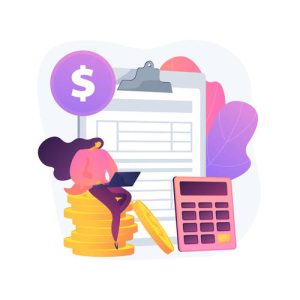There is a heated debate among marketers about whether benchmarking conversion rates is actually effective. Their argument is quite solid: the average eCommerce conversion rate for an apparel online store will differ profoundly for those of a B2B website that target industrial clients.
Looking at conversion rates alone won’t help you understand how your online store is performing and why you aren’t able to get as many sales as you would like. But, comparing your website conversion rate with other metrics will give you a more holistic view of the performance of your eCommerce store.
With that in mind, let’s look at the average conversion rate for online retailers and what these numbers could mean for you.
You might also be interested in CAN I USE GOOGLE KEYWORDS PLANNER IN ANDROID?
How Is Conversion Rate Calculated for Online Retailers?

If you want to get an accurate representation of how your conversion rates are to the average CVRs in your industry, then you need to pay close attention to the denominator. In other words, are you dividing the number of sales by the number of visitors or visitor sessions?
When it comes to calculating the conversion rate of an eCommerce store, the accepted formula is the ratio of sales to sessions expressed as a percentage.
Conversion Rate = Transactions / Total sessions x 100
Here’s why you should focus on visitor sessions instead of the number of unique visitors.
A session is defined as a visit from a unique visitor during a certain period of time, usually 30 minutes. If the visitor browses your online store for 10 minutes, leaves and then returns in five minutes to browse some more, then that counts as one session. If they leave and return again after the 30-minute period has expired, then you count that as another session.
The reasons why measuring sessions are better as opposed to unique visitors is that they are a more accurate indicator of the visitors’ intent. The same visitors may explore your site multiple times for different reasons, such as learning more about your products, price comparisons, and so on. Each new session represents an opportunity for conversion.
Online Retail Conversion Rates By Industry
When benchmarking conversion rates, it’s important to look at the averages in your industry. As mentioned before, the CVR of an apparel shop will differ from the one of a B2B website.
According to the latest data, Arts and Crafts have the highest conversion rate with 3.79% while Baby and Child only has a CVR of 0.99%. The Health and well-being industry also has high conversion rates with 3.62% while Pet Care averages at around 3.28%.
If we are looking at conversion rates by product type, then the Food and Drink have higher conversion rates of 3.58% while Furniture averages at around 0.68%.
Online Retail Conversion Rates By Country
It’s important to also consider the country you are targeting when looking at the average conversion rates in your industry. Conversion rates in China may differ from the ones in the United States, for example.
According to the latest reports, Germany has the highest conversion rate of 2.22% with the United Kingdom and the US following behind (1.96% and 1.88%.) Italy has the lowest CVR with only 0.99%.
Again, don’t take these numbers as absolute truths, but use them with other metrics to understand your audience better and determine what you need to include in your optimisation strategy.
Online Retail Conversion Rates By Traffic Sources
Knowing from where your visitors come from and how they find your online store is crucial for online retailers. This data will enable you to leverage the best performing and most promising traffic sources and set channel-specific goals.
The latest data show that referral traffic brings the highest conversion rates for online retailers. Referral traffic comes from external sites that link to your eCommerce store. Visitors that get to your online store after reading a blog post from an influencer in your niche recommending your products have a more defined purchases intent and are more likely to convert than those coming from social. In fact, social media has the lowest conversion rates (Facebook averages at around 0.93%) while referral traffic and email marketing are at the top with 5.44% and 5.32. Google Ads also have a rather low conversion rate of just 1.42%.
These numbers may seem a bit surprising as social media and especially Facebook is a preferred medium for eCommerce sites. While Facebook works very well for highly visual products, such as those in Fashion, Beauty and Wellness or Electronics, it’s not a good fit for every industry. Make sure you understand first what channels your audience prefer and what works best for your industry before you begin your commerce conversion rate optimisation efforts.
Online Retail Conversion Rates Based on Device
It’s also important to look at the average conversion rates based on the devices used, such as smartphone, desktop and tablet. Statistics show that conversion rates for desktops and tablets are higher that those for mobile devices. The desktop has an average conversion rate of 1.98%, tablets averages at 2.92% while mobile only scores 1.81%.
These numbers can help you identify what you need to change or optimise in your online marketing strategy. A low desktop conversion rate, for example, might indicate a poor website design while a low mobile conversion rate might be a sign that users have a poor mobile shopping experience.
So, What Is a Good Conversion Rate for Online Retailers?
As you’ve seen, conversion rates vary greatly depending on the industry, country, channel or device used. For example, Health and Wellbeing has a conversion rate of 3.62$ while Baby and Child averages at only 0.99%.
You should also be careful when comparing yourself with your competitors. Amazon, for example, has a staggering 13% conversion rate, which is about 7 times higher than the industry average, so there is no point in comparing your numbers with the eCommerce giant.
That’s why we cannot stress enough the importance of looking at the average conversion rates based on data like industry, channels, country, etc., but also keep an eye on your own metrics too to get an accurate picture of what is actually happening with your online store.
Benchmarks and averages are excellent for helping you determine the areas that you need to focus on. For example, if your mobile conversion rates are really low, then it may be a sign that you need to rethink the mobile shopping experience or have a closer look at the checkout process.
So, what’s a good conversion rate for online retailers?
Unfortunately, we don’t have a number for you. A lot of different factors are at play here and a good number for your business might be too small or too high for another online retailer. So, if you are not too much below the industry average, then a good conversion rate is one that is higher than your current one.
It’s just as simple as that.
Conclusion
Analysing industry data and applying the information to your business is not as easy as it seems. You need to be aware of the particularities of your online store and understand your audience and what works for them. You also need to know how to implement your findings so that you reach your conversion goals and grow your business. It can be quite the balancing act.
Here at Australian Internet Advertising, we understand that digital marketing is both an art and a science. We examine industry benchmarks and averages carefully but we also know how to adapt the data to your business.
If you want to get more customers to your online store and grow your business, then you should get in touch with us and tell us what your goals are. Together, we will craft the right strategy for you, implement it, track it, and optimise it. We will also send you a report every month to keep you in the loop.
Call us now at 1300304640 or fill our form if you are ready to talk




